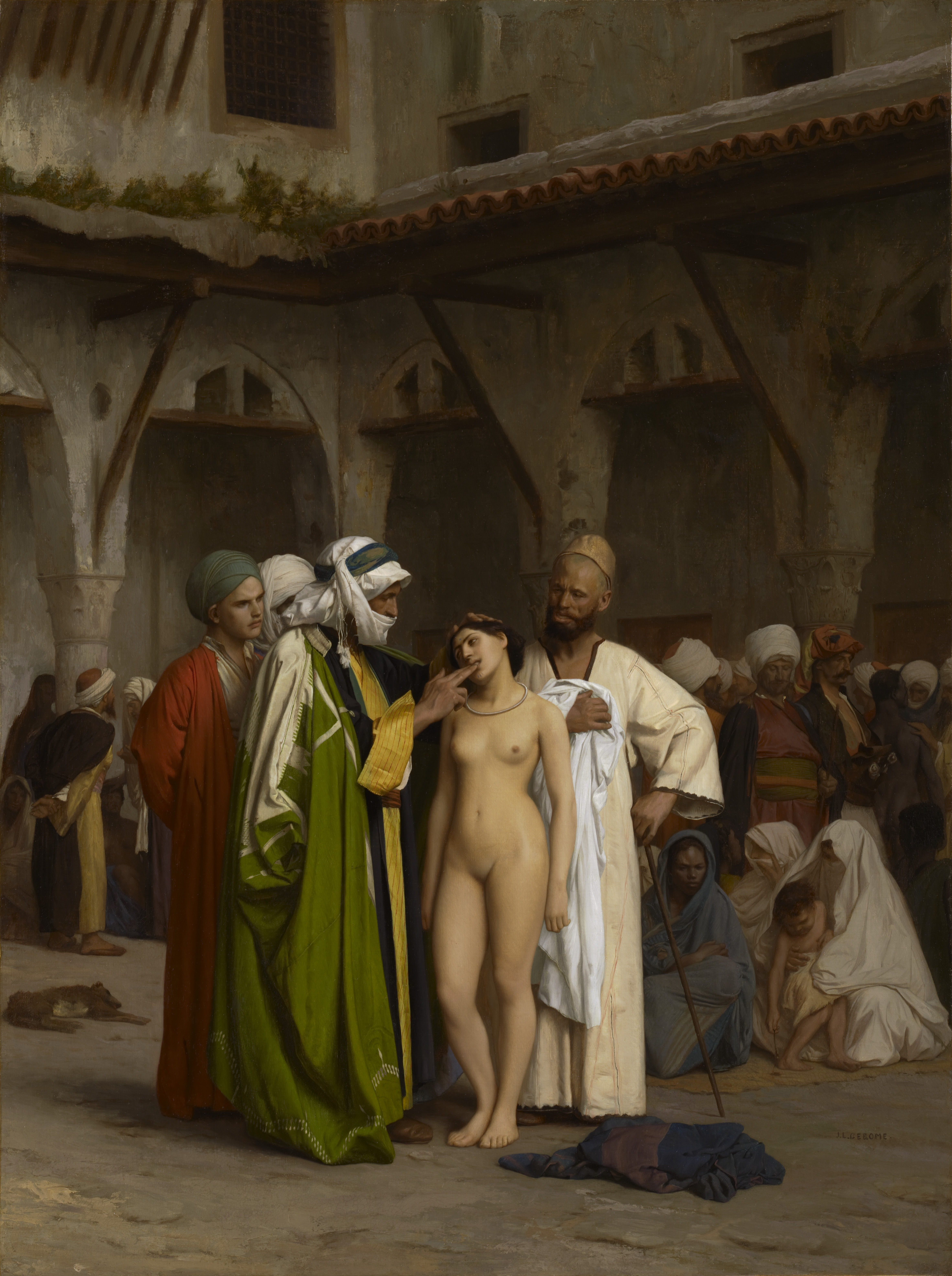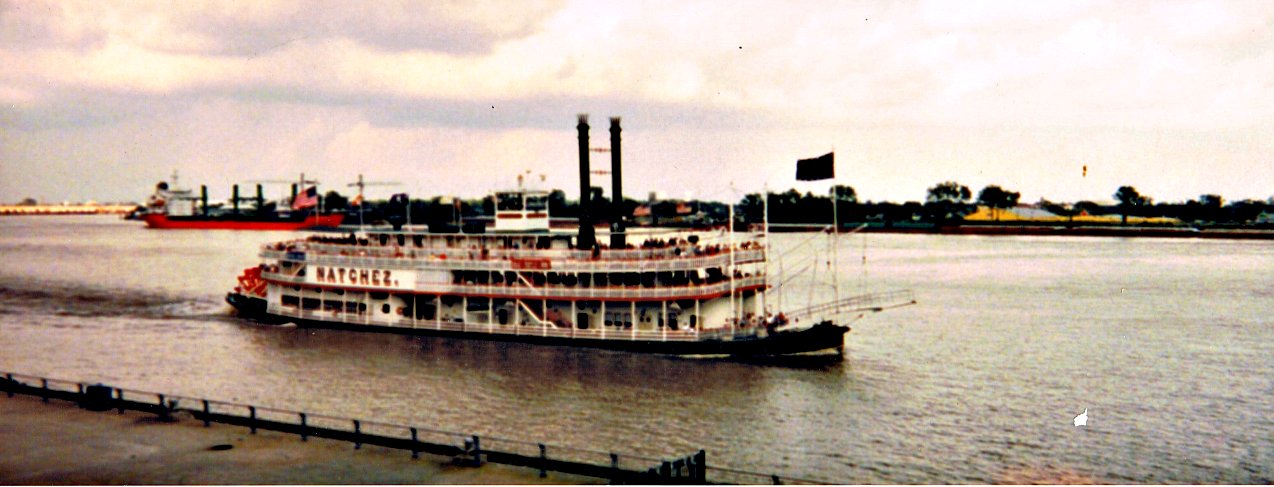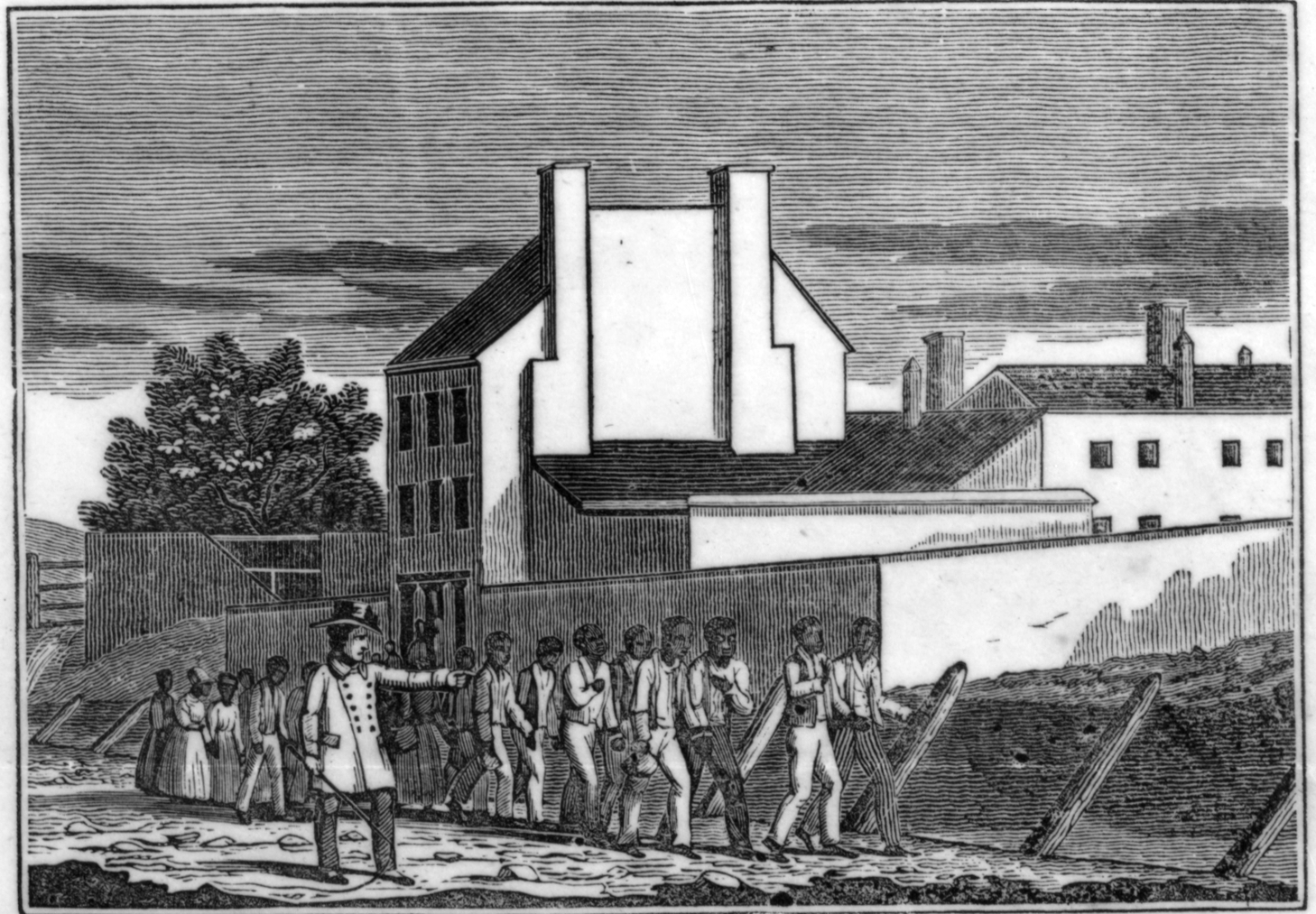|
Forks Of The Road Market
The Forks of the Road Market was a slave market in Natchez, Mississippi. It was largely developed by John Armfield and Isaac Franklin, who in 1833 capitalized on the difference in slave prices in the middle Atlantic states of Virginia and Maryland and the deep south. Using their company, Franklin and Armfield, they purchased inexpensive slaves in the Middle Atlantic, and transported them to markets in New Orleans and Natchez for sale. Many of the slaves were transported overland from Tennessee via caravans which were known as coffles. During the winter months, many were transported by sea in extremely crowded quarters; this method was not effective in the summer as the overcrowded slaves were overcome by the heat and died. The Forks of the Road market was located about a mile from downtown Natchez at the intersection of the ironically named Liberty Road and Washington Road, which has since been renamed to D’Evereux Drive in one direction and St. Catherine Street in the other. ... [...More Info...] [...Related Items...] OR: [Wikipedia] [Google] [Baidu] |
Slave Markets In The United States
A slave market is a place where slaves are bought and sold. These markets became a key phenomenon in the history of slavery. Slave markets in the Ottoman Empire In the Ottoman Empire during the mid-14th century, slaves were traded in special marketplaces called "Esir" or "Yesir" that were located in most towns and cities. It is said that Sultan Mehmed II "the Conqueror" established the first Ottoman slave market in Constantinople in the 1460s, probably where the former Byzantine slave market had stood. According to Nicolas de Nicolay, there were slaves of all ages and both sexes, they were displayed naked to be thoroughly checked by possible buyers. In the early 18th century, the Crimean Khanate maintained a massive slave trade with the Ottoman Empire and the Middle East, exporting about 2 million slaves from Russia and Poland-Lithuania over the period 1500–1700. Caffa (modern Feodosia) became one of the best-known and significant trading ports and slave markets. Slave mar ... [...More Info...] [...Related Items...] OR: [Wikipedia] [Google] [Baidu] |
Natchez, Mississippi
Natchez ( ) is the county seat of and only city in Adams County, Mississippi, United States. Natchez has a total population of 14,520 (as of the 2020 census). Located on the Mississippi River across from Vidalia in Concordia Parish, Louisiana, Natchez was a prominent city in the antebellum years, a center of cotton planters and Mississippi River trade. Natchez is some southwest of Jackson, the capital of Mississippi, which is located near the center of the state. It is approximately north of Baton Rouge, Louisiana, located on the lower Mississippi River. Natchez is the 25th-largest city in the state. The city was named for the Natchez tribe of Native Americans, who with their ancestors, inhabited much of the area from the 8th century AD through the French colonial period. History Established by French colonists in 1716, Natchez is one of the oldest and most important European settlements in the lower Mississippi River Valley. After the French lost the French and Indian ... [...More Info...] [...Related Items...] OR: [Wikipedia] [Google] [Baidu] |
John Armfield
John Armfield (1797–1871) was an American slave trader. He was the co-founder of Franklin & Armfield, "the largest slave trading firm" in the United States. He was also the developer of Beersheba Springs, and a co-founder of Sewanee: The University of the South. Early life John Armfield was born in 1797 in North Carolina to Quaker parents. He was of English descent. Career Armfield took up slave trading in the 1820s. For example, he sold a slave in Natchez, Mississippi, in 1827. In 1828, Armfield and his uncle by marriage, Isaac Franklin, formed the partnership of Franklin & Armfield to buy slaves in the mid-Atlantic states (Virginia, Maryland, Delaware, and the District of Columbia) and re-sell them in the newly opened territories of the Deep South. They were enormously successful and became two of the wealthiest men in the country. Franklin and Armfield joked with each other in letters about the enslaved women they were raping. They dissolved the partnership in 1835 an ... [...More Info...] [...Related Items...] OR: [Wikipedia] [Google] [Baidu] |
Isaac Franklin
Isaac Franklin (May 26, 1789 – April 27, 1846) was an American slave trader and plantation owner. He was the co-founder of Franklin & Armfield, which became the largest slave trading firm in the United States. Based in Alexandria, Virginia, it also had offices in New Orleans and other Louisiana cities. Franklin owned six plantations in Louisiana and Tennessee. His Fairvue plantation, in Sumner County, Tennessee, was formerly listed on the National Register of Historic Places. By 1841, Franklin left slave trading and devoted his energy to the plantations and other property interests. At the age of 50, he was married, for the first time, to Adelicia Hayes of Nashville. None of their four children survived to adulthood. In the late 19th century, his widow eventually sold the Louisiana plantations. In West Feliciana Parish, his former Angola and other plantations were bought by the state in 1901 and converted for use as Louisiana State Penitentiary, the largest maximum-secur ... [...More Info...] [...Related Items...] OR: [Wikipedia] [Google] [Baidu] |
Franklin And Armfield Office
The Franklin and Armfield Office, which houses the Freedom House Museum, is a historic commercial building in Alexandria, Virginia ( until 1846, the District of Columbia). Built c. 1810–20, it was first used as a private residence before being converted to the offices of the largest slave trading firm in the United States, started in 1828 by Isaac Franklin and John Armfield. "As many as million people are thought to have passed through between 1828 and 1861, on their way to bondage in Mississippi and Louisiana". Another source, using ship manifests (lists of slaves) in the National Archives, gives the number as "at least 5,000". The former Franklin & Armfield Office building is located just west of Alexandria's Old Town, on the north side of Duke Street between South West and South Payne streets. It is a three-story brick building, topped by a mansard roof and resting on a brick foundation. Its front facade is laid in Flemish bond, while the sides and rear are laid in com ... [...More Info...] [...Related Items...] OR: [Wikipedia] [Google] [Baidu] |
Coffle
A coffle was a group of enslaved people chained together and marched from one place to another by owners or slave traders. History In the Antebellum South, slave traders such as Franklin and Armfield arbitraged slave prices by purchasing slaves at low prices in Mid-Atlantic states such as Virginia, and then reselling them at a higher price in deep-south, especially in New Orleans, Louisiana and in Natchez, Mississippi at the notorious Forks of the Road Market. Franklin and Armfield established slavepens near Alexandria, Virginia Alexandria is an independent city in the northern region of the Commonwealth of Virginia, United States. It lies on the western bank of the Potomac River approximately south of downtown Washington, D.C. In 2020, the population was 159,467. Th ... to hold slaves, and when a sufficient number were gathered, some were transported by ship. Others were handcuffed to long chains in groups of 100 ( a coffle) and force marched to the markets of the deep so ... [...More Info...] [...Related Items...] OR: [Wikipedia] [Google] [Baidu] |
Natchez National Historical Park
Natchez National Historical Park commemorates the history of Natchez, Mississippi, and is managed by the National Park Service. The park consists of four separate sites: Fort Rosalie is the site of a former fortification from the 18th century, built by the French. It was later renamed Fort Panmure and controlled in turn by Great Britain, Spain, and the United States. The fort site is open to the public. The William Johnson House was the home of William Johnson, a 19th-century free African American barber and resident of Natchez whose diary has been published. Melrose was the estate of John T. McMurran, a lawyer, state senator, and planter who lived in Natchez from 1830 until the Civil War. Forks of the Road marks what was the second-busiest slave trading market in the Deep South between 1832 and 1863. This unit of the park opened in an official ceremony on June 18, 2021. Both Melrose and the William Johnson House contain furnishings related to life in antebellum Natch ... [...More Info...] [...Related Items...] OR: [Wikipedia] [Google] [Baidu] |
History Of Slavery In Mississippi
The history of the state of Mississippi extends back to thousands of years of indigenous peoples. Evidence of their cultures has been found largely through archeological excavations, as well as existing remains of earthwork mounds built thousands of years ago. Native American traditions were kept through oral histories; with Europeans recording the accounts of historic peoples they encountered. Since the late 20th century, there have been increased studies of the Native American tribes and reliance on their oral histories to document their cultures. Their accounts have been correlated with evidence of natural events. Initial colonization of the region was carried out by the French, though France would cede their control over portions of the region to Spain and Britain, particularly along the Gulf Coast. European-American settlers did not enter the territory in great number until the early 19th century. Some European-American settlers would bring many enslaved Africans with them t ... [...More Info...] [...Related Items...] OR: [Wikipedia] [Google] [Baidu] |
Buildings And Structures In Natchez, Mississippi
A building, or edifice, is an enclosed structure with a roof and walls standing more or less permanently in one place, such as a house or factory (although there's also portable buildings). Buildings come in a variety of sizes, shapes, and functions, and have been adapted throughout history for a wide number of factors, from building materials available, to weather conditions, land prices, ground conditions, specific uses, prestige, and aesthetic reasons. To better understand the term ''building'' compare the list of nonbuilding structures. Buildings serve several societal needs – primarily as shelter from weather, security, living space, privacy, to store belongings, and to comfortably live and work. A building as a shelter represents a physical division of the human habitat (a place of comfort and safety) and the ''outside'' (a place that at times may be harsh and harmful). Ever since the first cave paintings, buildings have also become objects or canvasses of much artisti ... [...More Info...] [...Related Items...] OR: [Wikipedia] [Google] [Baidu] |






